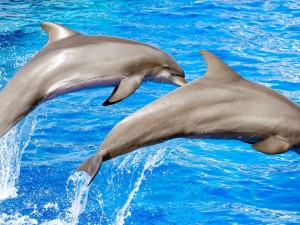
South African researchers have used advanced software to distinguish dolphin calls so clearly that particular species could be identified based solely on their whistles.
This technology - passive acoustic monitoring (PAM) - is used frequently across the globe, but until recently has not been applied on a mass scale to dolphins in southern African waters.
Dr Tess Gridley of the Department of Statistical Sciences at the University of Cape Town, along with Florence Erbs of Sea Search Africa and Dr Simon Elwen of the University of Pretoria, employed a software package called PAMGuard to try and identify three dolphin species that are often found along the southern African coastline.
Of particular interest was how well PAMGuard could correctly distinguish between Tursiops aduncus and Tursiops truncatus - more commonly known as the Indo-Pacific bottlenose dolphin and the common bottlenose dolphin. These two closely related species are notoriously difficult to identify from field observations, the researchers say.
A third species, the short-beaked common dolphin (Delphinus delphis), was also examined and the results were excellent.
The overall mean classification success rate with PAMGuard was 87.3% for all three species. Classification scores were significantly better than that expected by chance, say the researchers.
The Indo-Pacific bottlenoses' whistles were classified most successfully, with a hit rate of 96.3%. Misclassification between Indo-Pacific and common bottlenoses was rare (3.3%), and almost absent between the Indo-Pacific and short-beaked common dolphin (0.04%).
Short-beaked dolphins were correctly classified in 87.6% of cases, but their whistles were mistaken for those of the common bottlenose in 12.9% of cases.
While still well classified, common bottlenoses had the lowest accuracy of 79%. Misclassification with short-beaked dolphins was frequent at 19.4%, but they were rarely (1.6%) mistaken for the Indo-Pacific bottlenose.
The researchers tracked dolphins in Plettenberg Bay, Walvis Bay (in Namibia) and Zanzibar, and encountered the whistling dolphins 87 times during the study period.
"Our study represents a rare attempt to quantify the impact of intra-specific geographic variation in whistle characteristics on species classification results," Gridley says.
"Because, for instance, Zanzibar's common bottlenose dolphins were so acoustically distinct from the South African populations, people trained to identify the Zanzibar mammals were more likely to misclassify the whistles they heard in South African waters."
These kinds of geographic variation led the researchers to conclude that to maximise the chances of reliably classifying species, more acoustic data collection from dolphins in the southern African sub-region was needed, Gridley notes.
In order to make the most of the open source PAMGuard's fully automated whistle detection software, which makes it possible to track species at night or when the weather is poor, boosting the archive with basic data on call repertoire and vocal characteristics of local dolphins is crucial, she notes.
"This study, though, gave a glimpse of what is possible in terms of monitoring species that frequent the waters off southern Africa's shores using passive acoustic methods."
Share